Clinical Microbiology for Diagnostic Laboratory Scientists 1st Edition by Sarah J. Pitt, ISBN-13: 978-1118745854
[PDF eBook eTextbook]
- Publisher: Wiley-Blackwell; 1st edition (January 16, 2018)
- Language: English
- 296 pages
- ISBN-10: 9781118745854
- ISBN-13: 978-1118745854
A Modern, Evaluative, and Integrative Approach to Diagnostic Microbiology Encouraging Problem-Solving in the Clinical Laboratory Context through the Use of Examples to Illustrate Clinical and Diagnostic Issues.
Clinical Microbiology for Diagnostic Laboratory Scientists is designed to encourage readers to develop a way of thinking that can be applied to any diagnostic scenario in microbiology. Through consideration of a selected range of infections caused by pathogenic bacteria, viruses, fungi, protozoa, and helminths, the book encourages readers to explore connections between the available information about clinical symptoms, pathogenesis of infections, and the approaches used in laboratory diagnosis, in order to develop new insights.
The book begins with an introductory chapter that outlines the scope of clinical diagnostic microbiology and the key areas for the laboratory scientist to be aware of. The subsequent six chapters review a type of infection in depth, using particular pathogenic microorganisms to illustrate salient points. At the end of each chapter there are three exercises related to management of a diagnostic service and assessing the suitability of test methods to specific contexts. There are no right or wrong answers to these, but the reader can discuss them with their laboratory colleagues or university tutor.
- Makes extensive use of published research in the form of journal articles, publically available epidemiological data, professional guidelines, and specialist websites
- Stimulates the reader in critical appraisal of published evidence and encourages problem-solving in the laboratory
- Outlines the scope of clinical diagnostic microbiology and the key areas for the laboratory scientist to be aware of
- Considers topics relevant to professional scientists working in the area of diagnostic microbiology
Clinical Microbiology for Diagnostic Laboratory Scientists is ideal for post graduate scientists intending to pursue careers in diagnostic clinical microbiology and for biomedical scientists, clinical scientists, and full time students studying for upper level qualifications in biomedical science, microbiology, or virology.
Table of Contents:
Preface xiii
Acknowledgements xv
1 Overview of Clinical Diagnostic Microbiology 1
1.1 Introduction 1
1.2 Organisation and Management of Diagnostic Microbiology Services 2
1.3 Techniques 2
1.4 Point�]of�]Care Testing (POCT) 3
1.5 Antimicrobials 8
1.5.1 Antibacterial Agents (Antibiotics) 8
1.5.2 Antiviral Agents 8
1.5.3 Antifungal Agents 9
1.5.4 Antiparasitic Agents 12
1.5.5 Antimicrobial Sensitivity Testing 14
1.6 Selection and Evaluation of Diagnostic Tests 15
1.7 Quality Management 18
1.8 Infection Control, Monitoring and Surveillance 18
1.9 Exercises 21
References 21
2 Infections of the Blood 25
2.1 Introduction 25
2.2 Blood Stream Infections (Bacteraemia/Fungaemia) 26
2.2.1 Sepsis 27
2.2.1.1 Pathology 27
2.2.1.2 Epidemiology 28
2.2.1.3 Diagnostic Considerations 28
2.2.1.4 Treatment 31
2.2.2 Infective Endocarditis 31
2.2.2.1 Pathology 31
2.2.2.2 Epidemiology 32
2.2.2.3 Treatment 34
2.2.3 Laboratory Diagnosis of Blood Stream Infections 34
2.3 Blood�]Borne Infections 35
2.3.1 Human Immunodeficiency Virus 36
2.3.1.1 Epidemiology 37
2.3.1.2 Pathogenesis 38
2.3.1.3 Clinical Aspects 39
2.3.1.4 Laboratory Diagnosis 42
2.3.2 Human T�]Cell Lymphoma Viruses 43
2.3.3 Trypanosoma cruzi 44
2.3.4 Creutzfeldt�]Jakob Disease 44
2.3.5 West Nile Virus 45
2.3.6 Blood�]Borne Herpes Viruses 46
2.4 Exercises 47
2.5 Case Studies 48
References 49
3 Respiratory Tract Infections 55
3.1 Introduction 55
3.1.1 Upper Respiratory Tract Infections 57
3.1.2 Lower Respiratory Tract Infections 58
3.1.3 Respiratory Pathogens 60
3.2 Respiratory Syncytial Virus 60
3.2.1 Introduction 60
3.2.2 Pathogenesis and Clinical Symptoms 61
3.2.3 Epidemiology 63
3.2.4 Laboratory Diagnosis 63
3.2.5 Management and Treatment 65
3.3 Streptococcus pyogenes and Streptococcus pneumoniae 66
3.3.1 Introduction 66
3.3.2 Pathogenesis and Clinical Symptoms 66
3.3.2.1 Pathogenesis of Streptococcus pyogenes Infection 66
3.3.2.2 Pathogenesis of Streptococcus pneumoniae Infection 69
3.3.3 Epidemiology 70
3.3.4 Laboratory Diagnosis 71
3.3.5 Management and Treatment 73
3.4 Mycobacterium tuberculosis 74
3.4.1 Introduction 75
3.4.2 Pathogenesis and Clinical Symptoms 75
3.4.3 Epidemiology 77
3.4.4 Laboratory Diagnosis 77
3.4.5 Control, Treatment and Management 79
3.5 Pneumocystis jirovecii 81
3.5.1 Introduction 81
3.5.2 Pathogenesis and Clinical Symptoms 82
3.5.3 Epidemiology 82
3.5.4 Laboratory Diagnosis 83
3.5.5 Management and Treatment 84
3.6 Paragonimus westermani 84
3.6.1 Introduction 84
3.6.2 Pathogenesis and Clinical Symptoms 85
3.6.3 Epidemiology 86
3.6.4 Laboratory Diagnosis 86
3.6.5 Management and Treatment 86
3.7 Exercises 87
3.8 Case Studies 87
References 88
4 Gastrointestinal Infections 95
4.1 Introduction 95
4.1.1 Normal Gut Flora 95
4.1.2 Diarrhoea 96
4.1.3 Gastrointestinal Pathogens 98
4.2 Campylobacter 98
4.2.1 Introduction 98
4.2.2 Pathogenesis and Clinical Symptoms 98
4.2.3 Epidemiology 99
4.2.4 Laboratory Diagnosis 100
4.2.5 Treatment and Control 102
4.3 Clostridium difficle 103
4.3.1 Introduction 103
4.3.2 Pathogenesis and Clinical Symptoms 103
4.3.3 Epidemiology 104
4.3.4 Laboratory Diagnosis 105
4.3.5 Management, Treatment and Control 106
4.4 Cryptosporidium 108
4.4.1 Introduction 108
4.4.2 Pathogenesis and Clinical Symptoms 108
4.4.3 Epidemiology 109
4.4.4 Laboratory Diagnosis 110
4.4.5 Treatment and Control 111
4.5 Norovirus 112
4.5.1 Introduction 112
4.5.2 Pathogenesis and Clinical Symptoms 112
4.5.3 Epidemiology 113
4.5.4 Laboratory Diagnosis 115
4.6 Helicobacter pylori 118
4.6.1 Introduction 118
4.6.2 Pathogenesis and Clinical Symptoms 119
4.6.3 Epidemiology 120
4.6.4 Laboratory Diagnosis 121
4.6.5 Treatment and Management 124
4.7 Liver Infections 124
4.7.1 Hepatitis Viruses 125
4.7.1.1 Hepatitis A Virus 125
4.7.1.2 Hepatitis B Virus 127
4.7.1.3 Hepatitis C Virus 132
4.7.1.4 Hepatitis D (Delta) Virus 134
4.7.1.5 Hepatitis E Virus 134
4.7.1.6 Hepatitis G Virus (GB�]Virus C) 136
4.7.2 Liver Coinfections 136
4.8 Exercises 137
4.9 Case Studies 138
References 139
5 Congenital, Perinatal and Neonatal Infections 149
5.1 Introduction 149
5.2 Antenatal Screening 149
5.3 Infections Which Adversely Affect the Mother During Pregnancy 150
5.3.1 Malaria 152
5.3.1.1 Pathogenesis and Clinical Symptoms 152
5.3.1.2 Laboratory Diagnosis 153
5.3.1.3 Management and Treatment 154
5.3.2 Influenza A 154
5.3.2.1 Pathogenesis and Clinical Symptoms 154
5.3.2.2 Laboratory Diagnosis 155
5.3.2.3 Management and Treatment 155
5.3.3 Chlamydia 156
5.3.3.1 Pathogenesis and Clinical Symptoms 156
5.3.3.2 Epidemiology 157
5.3.3.3 Laboratory Diagnosis 158
5.3.3.4 Treatment and Management 159
5.4 Congenital Infections 159
5.4.1 Treponema pallidum 160
5.4.1.1 Syphilis Infection 160
5.4.1.2 Pathogenesis and Clinical Symptoms of Congenital Syphilis 161
5.4.1.3 Laboratory Diagnosis 162
5.4.1.4 Management and Treatment 164
5.4.1.5 Epidemiology 164
5.4.2 Rubella 165
5.4.2.1 Rubella Infection 165
5.4.2.2 Pathogenesis and Clinical Symptoms of Congenital Rubella 165
5.4.2.3 Laboratory Diagnosis 166
5.4.2.4 Management 168
5.4.2.5 Epidemiology 168
5.4.3 Toxoplasma gondii 170
5.4.3.1 Toxoplasmosis Infection 170
5.4.3.2 Pathogenesis and Clinical Symptoms of Congenital Toxoplasmosis 171
5.4.3.3 Laboratory Diagnosis 172
5.4.3.4 Management and Treatment 173
5.4.3.5 Epidemiology 174
5.5 Perinatal Infections 175
5.5.1 Hepatitis B Virus 175
5.5.2 Human Immunodeficiency Virus 177
5.5.3 Neonatal Conjunctivitis (Ophthalmia Neonatorum) 178
5.6 Neonatal Infections 179
5.6.1 Neonatal Sepsis 179
5.6.2 Neonatal Meningitis 179
5.6.2.1 Laboratory Diagnosis 180
5.6.3 Group B Streptococcus spp. Infection 180
5.6.4 Neonatal Herpes Simplex 181
5.7 Exercises 183
5.8 Case Studies 183
References 184
6 Sexually Transmitted Infections 193
6.1 Introduction 193
6.2 Herpes Simplex Virus 195
6.2.1 Introduction 197
6.2.2 Pathogenesis and Clinical Symptoms 197
6.2.3 Epidemiology 198
6.2.4 Laboratory Diagnosis 199
6.2.5 Treatment and Management 200
6.3 Neisseria gonorrhoeae 201
6.3.1 Introduction 201
6.3.2 Clinical Symptoms and Pathogenesis 201
6.3.3 Epidemiology 203
6.3.4 Laboratory Diagnosis 204
6.3.5 Treatment 205
6.4 Human Papilloma Virus 206
6.4.1 Introduction 206
6.4.2 Clinical Symptoms and Pathogenesis 206
6.4.3 Epidemiology 208
6.4.4 Laboratory Diagnosis 208
6.4.5 Treatment 211
6.4.6 Vaccination 211
6.5 Trichomomas vaginalis 212
6.5.1 Introduction 213
6.5.2 Pathogenesis and Clinical Symptoms 213
6.5.3 Epidemiology 213
6.5.4 Laboratory Diagnosis 214
6.5.5 Treatment and Management 215
6.6 Exercises 215
6.7 Case Studies 215
References 216
7 Infections in Immunocompromised Patients 223
7.1 Introduction 223
7.2 Congenital Genetic Immunological Disorders 224
7.3 Blood Cell and Bone Marrow Disorders 226
7.4 HIV/AIDS 228
7.5 Cytomegalovirus 229
7.5.1 Introduction 229
7.5.2 Pathogenesis and Clinical Symptoms 229
7.5.3 Epidemiology 231
7.5.4 Laboratory Diagnosis 232
7.5.5 Treatment and Control 233
7.6 Staphylococcus spp. 234
7.6.1 Introduction 234
7.6.2 Pathogenesis and Clinical Symptoms 235
7.6.3 Epidemiology 236
7.6.4 Laboratory Diagnosis 237
7.6.5 Treatment and Management 241
7.7 Aspergillus spp. 241
7.7.1 Introduction 242
7.7.2 Pathogenesis and Clinical Symptoms 242
7.7.3 Epidemiology 243
7.7.4 Laboratory Diagnosis 244
7.7.5 Treatment and Management 246
7.8 Cryptococcus spp. 246
7.8.1 Introduction 247
7.8.2 Pathogenesis and Clinical Symptoms 247
7.8.3 Epidemiology 248
7.8.4 Laboratory Diagnosis 250
7.8.5 Treatment 251
7.9 Exercises 251
7.10 Case Studies 252
References 253
Appendix 261
Index 267
What makes us different?
• Instant Download
• Always Competitive Pricing
• 100% Privacy
• FREE Sample Available
• 24-7 LIVE Customer Support

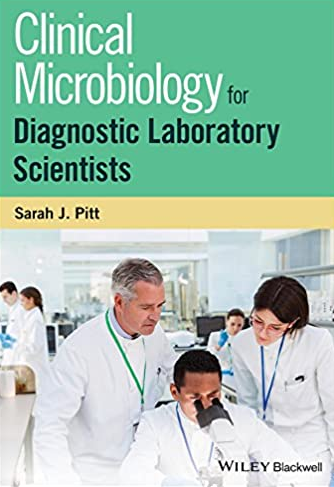
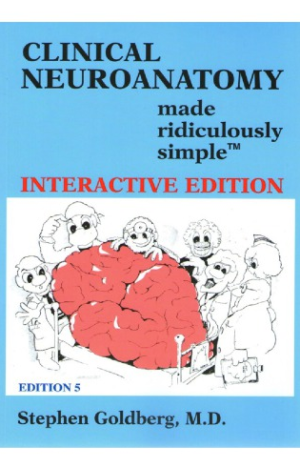
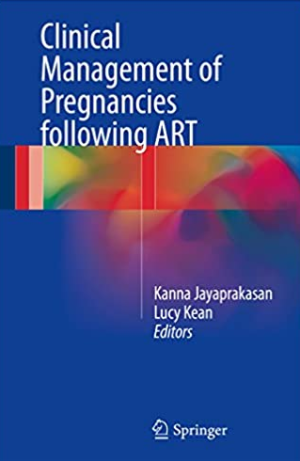
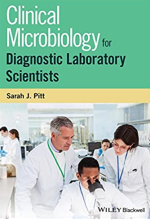



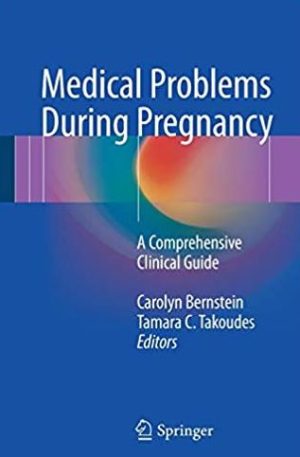
Reviews
There are no reviews yet.